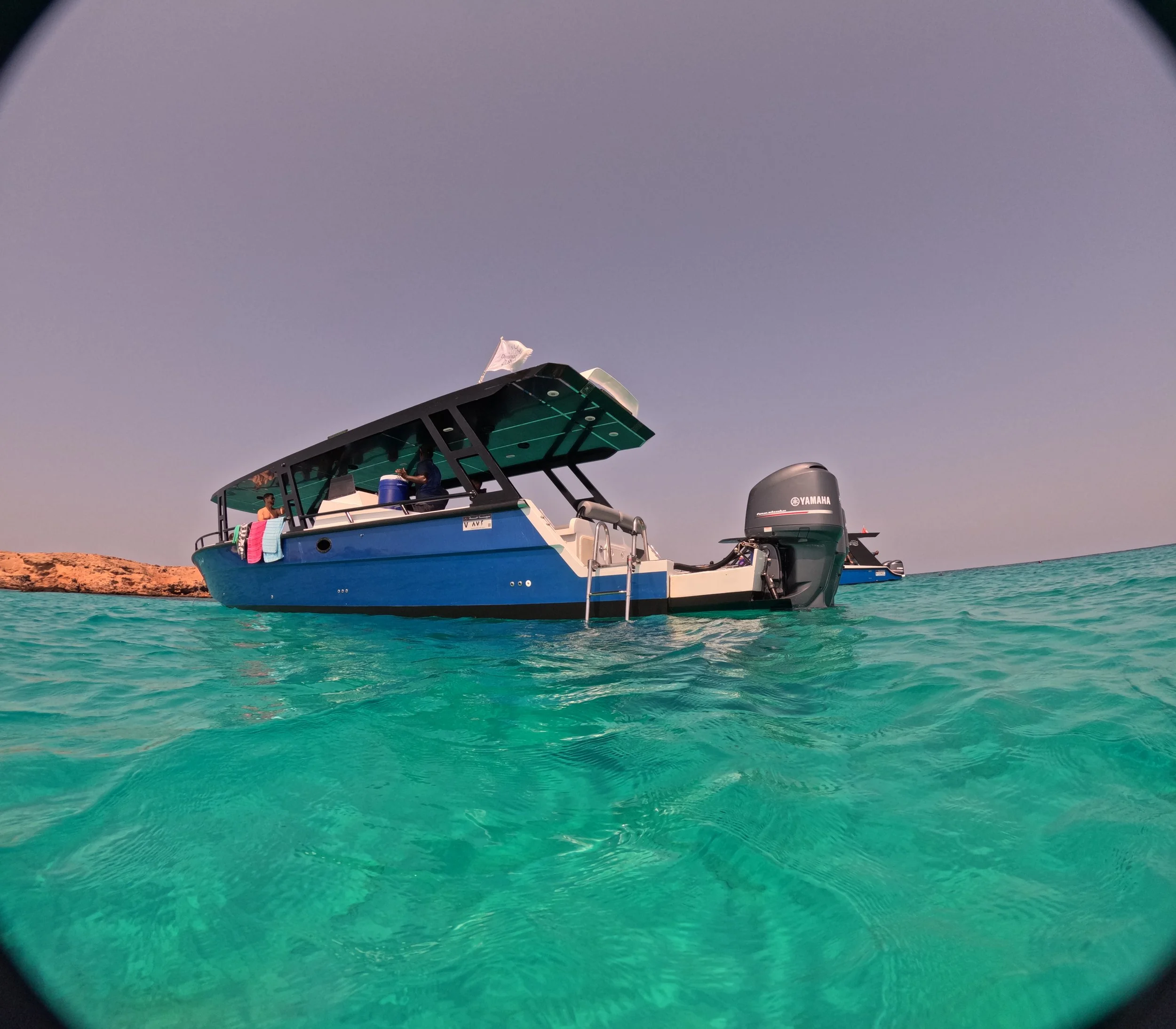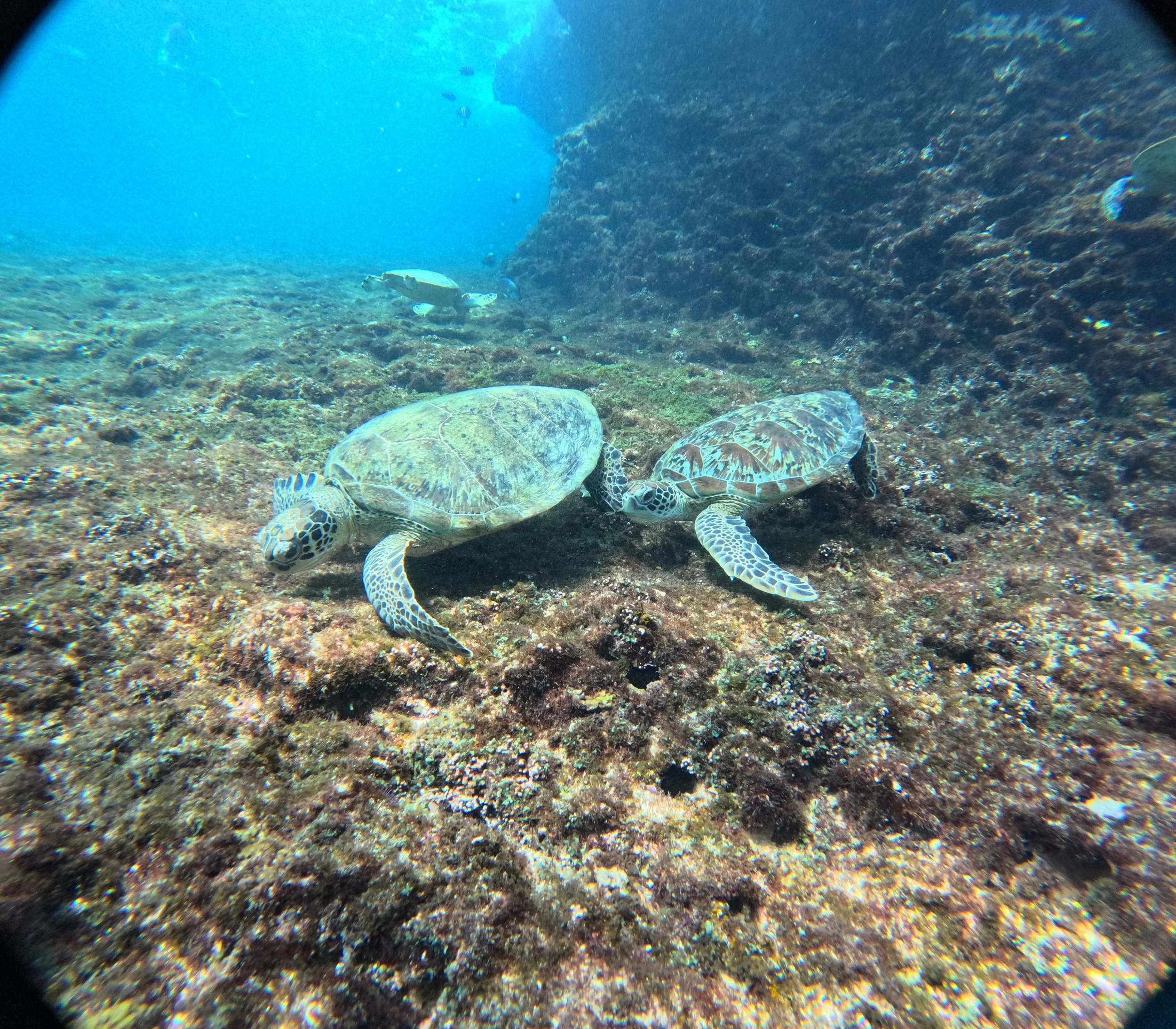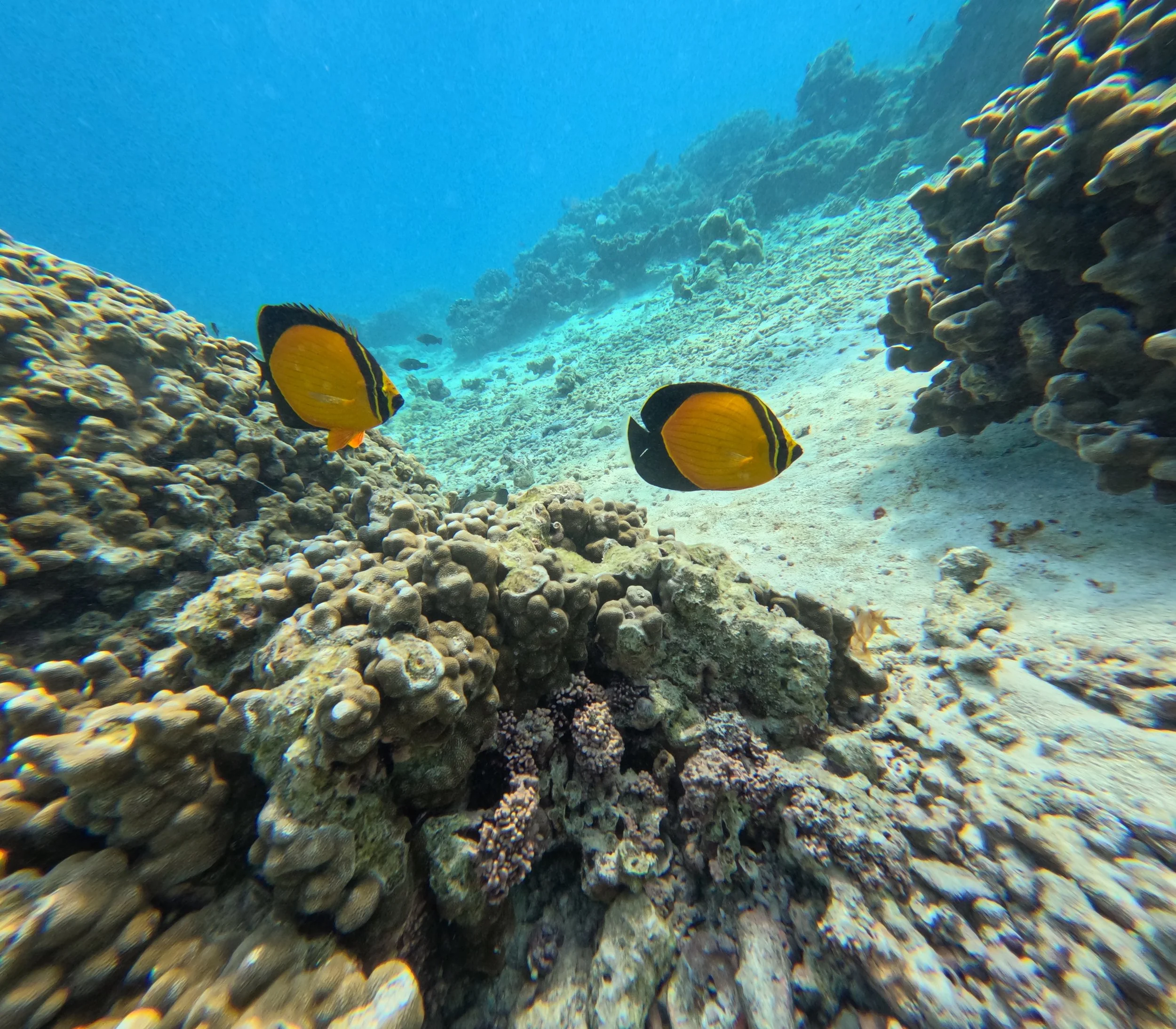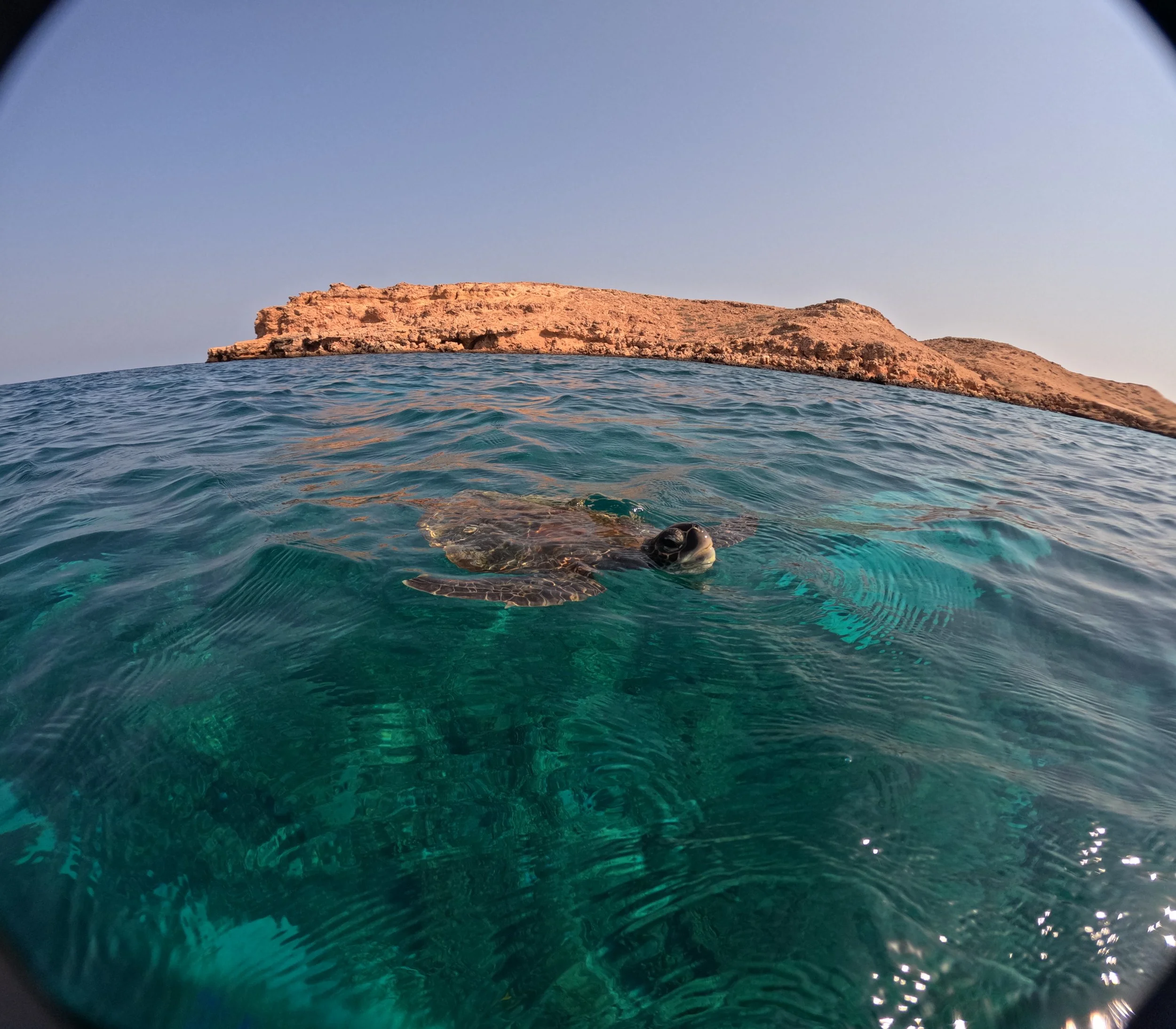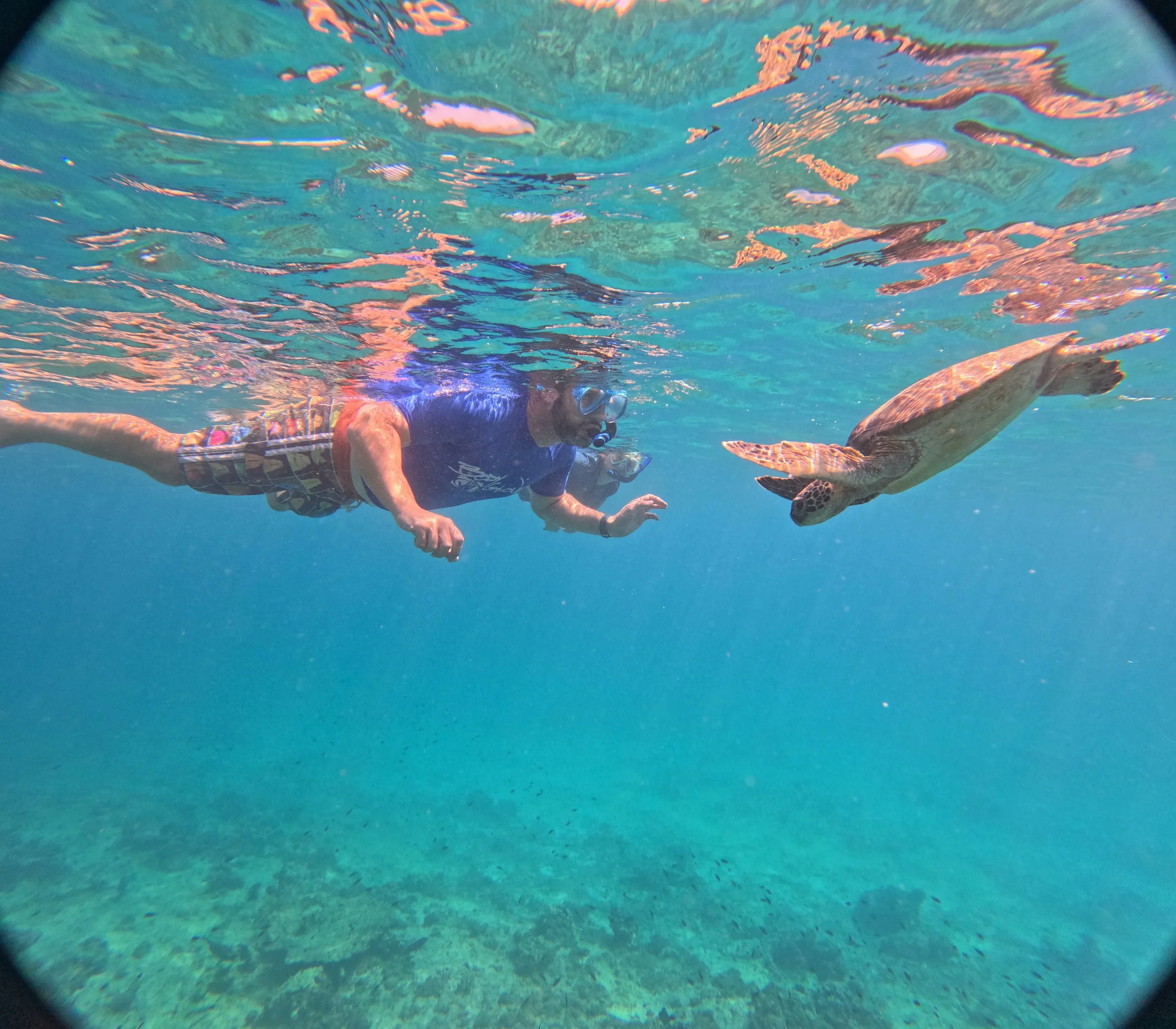Snorkelling at the Damaniyat Islands: Swimming with Turtles off the Coast of Oman
Ever since we found out we were moving to Oman, I’d been quietly (okay, not so quietly) determined to visit the Damaniyat Islands. I’d seen photos of their turquoise water, read about sea turtles gliding gracefully through coral reefs, and promised myself that it was going to be top of the to-do list once we’d got settled.
When we finally arrived in Muscat, I found out that the islands weren’t some far-flung paradise hours away, but just off the coast reachable in well under an hour by boat. A massive win if you suffer from sea sickness.
Where Are the Damaniyat Islands?
The Damaniyat Islands (sometimes spelled Daymaniyat) are a chain of nine small islands scattered across the Gulf of Oman, about 18 kilometres off the coast, directly north of Muscat and the nearby town of Seeb. Despite their proximity to the city, the islands feel astonishingly remote, a cluster of golden-brown rocks rising from a sea so vividly blue it looks almost painted.
This area is part of the Damaniyat Islands Nature Reserve, established in 1996 to protect one of Oman’s most important marine ecosystems. It’s a sanctuary for hawksbill and green turtles, which come ashore to nest, as well as for thriving coral reefs, whale sharks, rays, and over 200 species of fish.
Access is controlled by the Omani Environment Authority, and there are rules in place to preserve its fragile balance. During turtle nesting season (May to October), visitors aren’t allowed to go ashore, which only adds to the feeling that you’re entering a protected world. The reserve also has a strict “no touching” policy when it comes to coral or marine life, and reputable tour operators make sure guests understand that the goal is to observe, not interfere.
A Hidden Gem So Close to Muscat
Our first visit was in September 2025, just before my eldest son flew back to university. We booked the trip spontaneously, the night before, in fact, with a company called Damaniyat Pearl, which departs from Seeb Marina. The drive there took around 15 minutes from home, although Google Maps decided to steer me right through the souk rather than on the perfectly nice, clear main roads. It was a bit a squeeze in a massive Land Cruiser and for a few moments I did fear for my wing mirrors!
As we left the marina, Muscat’s skyline melted into the distance. Looking back at the city, it’s hard not to draw comparisons with Dubai or Abu Dhabi, Muscat is very low-rise with the tallest buildings by far being the minarets of the many mosques. The sea was perfectly calm, thank goodness, broken only by the occasional flash of silver fish leaping through the surface. About halfway to the islands, we were joined by a small pod of dolphins that played in the boat’s bow wave, leaping and weaving effortlessly. Everyone stopped talking. It was the kind of moment that makes you feel quietly grateful just to be there.
It’s hard to put into words how striking the contrast is: barren rock surrounded by some of the clearest water I’ve ever seen. There’s no vegetation, no sign of people, and yet the place feels alive with movement—seabirds circling above, schools of fish flickering beneath the waves, and the gentle rise and fall of the ocean breathing around you.
Our First Dive: Meeting the Turtles
The boat anchored in a calm, turquoise bay, and we slipped into the water. The first shock of coolness quickly gave way to that warm, silken comfort that makes you never want to get out. Within ten minutes, we’d spotted our first turtle. It was enormous — and utterly unbothered by our presence. It moved slowly along the seabed, stopping occasionally to graze on coral or poke its head into a crevice. Floating above, I could hear only the gentle hiss of my own breathing through the snorkel and the crackle of the coral. It felt like being suspended in another world.
We stayed in that first location for about an hour, drifting over reefs teeming with life. Schools of parrotfish, angelfish, and butterflyfish darted through the coral, their scales catching the sunlight like shards of stained glass.
At the second site, we were surrounded by turtles—eight or nine of them gliding lazily through the water. Some slept on the rocks below, others surfaced for air, and one particularly curious turtle swam straight toward me until we were almost face to face. I kicked backwards quickly to give it space, I was struggling to move quickly but the turtle was turtally unbothered!
The Second Trip: An Eco-Friendly Adventure
A few weeks later, in October, we went back—this time with a group of my husband’s colleagues and a different company, Damaniyat Shells, which operates from Al Mouj Marina. The team at Damaniyat Shells are proudly eco-friendly and plastic-free, and they make a genuine effort to keep the experience sustainable. Instead of handing out single-use bottles, they gift every guest a reusable metal water bottle to use on the boat and take home, a small gesture that says a lot about their philosophy.
The boat itself was sleek and shaded, which was ideal for me (as someone who gets seasick at the mere mention of waves). Thankfully, the water that morning was as smooth as glass and about 40 minutes later, the first of the islands appeared on the horizon—pale and rugged, silhouetted against an endless blue sky. When we reached the snorkelling sites, I realised how different this trip would be.
Damaniyat Shells took us to quieter areas — less visited, more pristine — where ours was often the only boat in sight.
Rays, Eels, and the Reef’s Hidden Life
The underwater visibility that day was unreal, like swimming in glass. The sunlight filtered through the water, illuminating coral heads and tiny reef fish swirled around us like confetti.
We saw turtles again, of course—lots of them—including a few gently sleeping on the rocks below. But there were other surprises too. A moray eel peeked out from its rocky hideaway, mouth opening and closing like a slow-motion yawn. A ray settled gracefully into the sand, disappearing beneath it in seconds. Everywhere you looked, the reef was busy. It was impossible not to feel a sense of responsibility to protect it — and that’s one of the things I loved most about the trip. Both operators emphasised respect for the environment, but Damaniyat Shells in particular spoke passionately about coral restoration and the impact of plastics on marine life. Their approach felt thoughtful and authentic.
All Aboard
Both tours followed a similar schedule: setting off around 8 a.m., spending about four hours on the water, and returning to Muscat by 12:30 p.m. The groups were small, consisting of around 12–15 people, which kept things relaxed and friendly. Each company provided good-quality snorkelling gear, water, and light snacks (usually sandwiches and fruit). There was always a shaded area on the boat for those who wanted to take a break from the sun, and the guides made sure everyone knew where and how to look for turtles. Practical details were well handled too: parking was easy at both marinas, and the check-in process took no more than ten minutes. Everyone wore swimwear with rash vests to protect against the sun, and both companies reminded guests to use reef-safe sunscreen — a must in Oman’s intense midday heat.
Comparing the Tour Operators
If you’re choosing between them, here’s my take:
Damaniyat Pearl (Seeb Marina)
Ideal for anyone staying closer to Seeb or northern Muscat.
Visits the popular, easily accessible snorkelling sites where turtles are almost guaranteed.
Friendly, efficient, and good value
Expect a few other boats in the area — it’s social, lively, and well-run.
Damaniyat Shells (Al Mouj Marina)
Best for eco-conscious travellers who prefer quieter, off-the-beaten-path experiences.
Plastic-free policy and reusable water bottles make a great impression.
Highly knowledgeable guides who share insights about conservation and local wildlife.
Slightly pricier at around but worth every rial.
Includes underwater GoPro photos, shared after the trip — a brilliant souvenir.
Under the Sea
What struck me most about both trips is how unspoiled the Damaniyats remain. Despite their proximity to Muscat, the islands have been protected from overdevelopment and careless tourism. There are no facilities, no restaurants, no jet skis, just the sound of waves and the occasional turtle surfacing for air. The Royal Omani Police (ROP) are vigilant about checking that all the boats have permits, which is fantastic.
The rule against stepping onto the beaches during nesting season isn’t an inconvenience; it’s a privilege to witness nature being safeguarded so carefully. These islands truly belong to the turtles, and it feels right that we’re merely visitors in their world.
Each time I’ve visited, I’ve come home with a sense of how lucky I am. On my first trip, it was the excitement of seeing a turtle up close for the very first time—that ancient, peaceful creature moving through the water as if it had all the time in the world. On the second, it was the joy of exploring new sites and seeing how the same ocean can feel completely different from one week to the next.
The Damaniyats are a reminder of what makes Oman so special: vast stretches of wilderness, both on land and beneath the surface, that remain remarkably unspoiled. I’ll never forget that moment of meeting a turtle’s gaze—calm, curious, and utterly unconcerned with our presence. For a few seconds, it felt like time slowed, and I understood exactly why this place needs to stay just as it is.
(Some underwater photos were taken with our own GoPro, and others kindly shared by our tour operator after the trip.)
Know Before You Go: Quick Tips
Best time to visit: September to May for calm seas and good visibility.
Duration: Around 4–5 hours including travel.
Cost: 25–30 OMR per person.
Departure points: Seeb Marina or Al Mouj Marina.
Bring: Rash vest, towel, sunglasses, reef-safe sunscreen, and a dry bag.
Leave behind: Plastic bottles, aerosols, or anything non-biodegradable.
Eco tip: Choose operators with sustainable policies — it really makes a difference.
